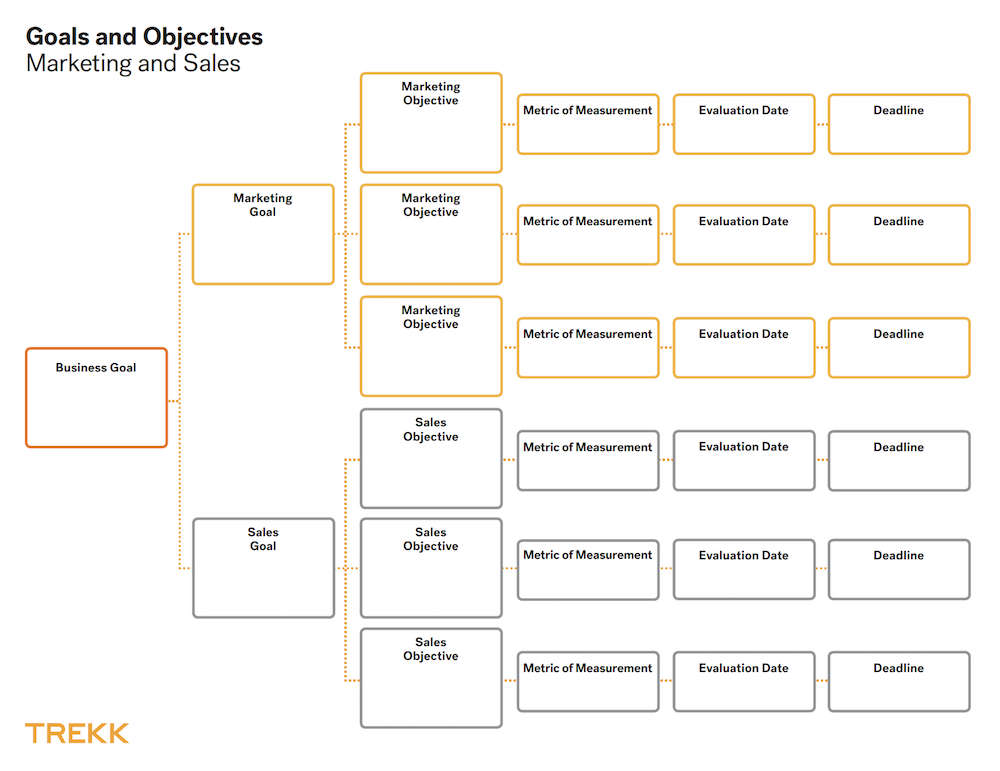It’s that time of year again: time to start strategizing next year’s marketing initiatives, which, let’s face it, can seem daunting. The good news is that with a little bit of structure and interactive teamwork, the process can actually be fun, insightful, and even inspired.
We’ve shepherded countless clients through the annual planning process, and we’ve found it’s most productive (and painless) when boiled down to the basics — and when you have the right tools at your disposal. Try this method as is for a simple, straightforward strategy session, or supplement it with time for your whole team to debrief the past year and dream big about the year ahead.
First, dig into this year’s data.
We usually start planning for the next year at the beginning of the fourth quarter, so we’re working with data from the first three quarters, as well as knowledge of what’s worked or hasn’t worked in years past.
This is when you’ll really dig into the data. How much traffic did your content drive to your website? What was your ROI on that trade show sponsorship? Which of your digital ads performed, and which were duds? Where did this year’s new leads come from? What was the actual conversion path for your new customers?
Other sources of data to consider include customer surveys and internal surveys or working sessions. Ask your customers how they heard about you, and how they prefer to communicate with you in the future. Ask your team about their wins and challenges from this year.
All of this data will help inform next year’s channel strategy.
Then, determine your goals and objectives.
You may already know your high-level goals for next year; they probably have something to do with generating leads, increasing brand awareness, or increasing conversions.
Now, break down those goals into concrete objectives, which will help you decide which channels to focus on.

An objective is a specific condition that must be met in order to reach a goal. For example, if my goal is to generate new leads, a good objective might be to publish three new content offers targeted at those in the consideration stage of the customer journey by the end of the first quarter.
Objectives roll up into goals; if you meet all your marketing objectives, the result should be a successfully achieved marketing goal. To be more strategic in your planning process, work with your sales team to document their objectives and goals, as well, keeping in mind that sales goals and marketing goals should all roll up into business goals.
To guide your planning, download our Goals and Objectives template.
Finally, plan by channel.
Here’s where the plan comes together. As a team, brainstorm campaigns that will help you achieve your marketing objectives.

When we map out a client’s annual marketing plan, we do so by channel, and we break down the activities in each channel by quarter and by month. Although in practice these might look different depending on the industry and client, these are the channels we start with:
- Direct Marketing
- Print Advertising
- Digital Advertising
- Website/Blog
- Workshops/Webinars
- Social Media
- Content Offers
- Public Relations
- Trade Shows/Events
- Internal Communications
If you’re part of a smaller organization, you might be able to document all of your marketing communications in one plan. If you’re part of a larger organization or have several verticals, you could create a plan for each product, brand, or even campaign.
The value of this multi-channel campaign map is that it helps to ensure that everyone on the team knows what’s happening when, minimizing surprise deadlines and freeing teams to work on more proactive, strategic work.
Ready to map your marketing for next year? Download your Marketing Communications Plan template and get planning.
Header photo by Nik Shuliahin.



